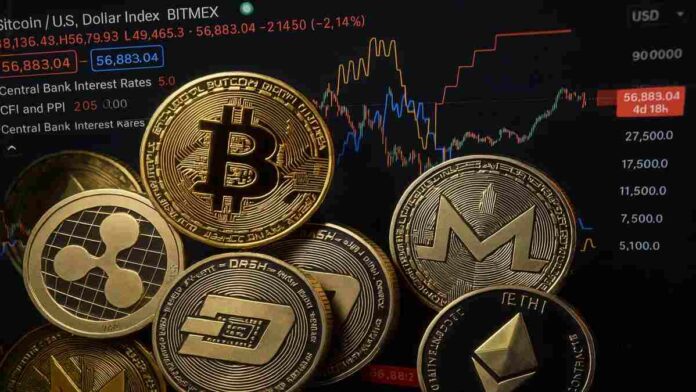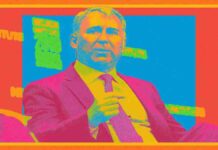The Exchange Emperor – Changpeng Zhao and the Binance Empire
In the sprawling empire of cryptocurrency, where decentralized dreamers like Charles Hoskinson build foundational protocols and maximalists like Michael Saylor champion digital gold, Changpeng Zhao—known universally as CZ—stands as the architect of scale. Born in 1977 in Jiangsu, China, Zhao is a Canadian citizen whose journey from modest immigrant roots to founding Binance, the world’s largest cryptocurrency exchange by trading volume, exemplifies the fusion of technical precision and market intuition. With an estimated net worth of $88 billion as of October 2025 (per Forbes), Zhao’s influence extends through Binance’s global footprint, which processes billions in daily volume and supports over 150 cryptocurrencies. As a financial investigative journalist, I view Zhao not through the lens of controversy but as a pivotal enabler of mass adoption—his platform democratized access to digital assets, launching Binance Coin (BNB) and fostering an ecosystem that includes the BNB Chain. In an industry of fragmented visions, Zhao’s pragmatic empire-building bridges retail users and institutional players, underscoring how exchanges became the gateways to the coins. We explore his arc through four parts: his formative years and pre-crypto career; the spark of cryptocurrency discovery; the founding and explosive growth of Binance; and the horizons ahead, where his advisory roles and ventures signal enduring impact.
This chapter traces Zhao’s path from a family marked by intellectual exile in China to a global crypto statesman, beginning in Part 1 with the foundations that shaped a resilient innovator.
Part 1: Immigrant Ingenuity – Biography and Pre-Crypto Ventures
Changpeng Zhao’s story opens in the coastal city of Lianyungang, Jiangsu province, China, on September 10, 1977—a time when the Cultural Revolution’s echoes still lingered, shaping a nation in flux. Born into an academic family, Zhao’s early life was defined by intellectual rigor and abrupt upheaval. His father, a university professor, was labeled a “bourgeois intellectual” and faced temporary exile, prompting the family’s relocation amid political pressures. In 1989, at age 12, Zhao immigrated to Vancouver, Canada, with his parents and three siblings, seeking stability in a multicultural mosaic far from China’s turbulent currents. Vancouver’s West Side, with its blend of immigrant ambition and Pacific vistas, became the backdrop for Zhao’s formative years—a place where he balanced cultural adaptation with unyielding curiosity.
As the eldest son, Zhao shouldered family responsibilities early. To support his parents, who worked low-wage jobs, he took on odd tasks: delivering newspapers on a bicycle route, bussing tables at a coffee shop, and flipping burgers at McDonald’s for $4.50 an hour. These experiences, detailed in Zhao’s public reflections, instilled a work ethic that valued efficiency over glamour—lessons in operational resilience that would later underpin his exchange-building prowess. Socially, Zhao navigated the challenges of an immigrant teen: English as a second language, cultural dislocation, and the pressure to excel. Yet, his intellect shone through. At Moscrop Secondary School, he immersed himself in computer science, coding simple programs on a Commodore 64 and excelling in math competitions. By graduation in 1995, Zhao had honed a pragmatic mindset, viewing challenges as optimizable systems rather than obstacles.
Higher education followed at McGill University in Montreal, where Zhao enrolled in 1995 to study computer science. Montreal’s bilingual vibrancy and tech undercurrents offered fertile ground. Zhao thrived academically, focusing on algorithms and data structures, but his entrepreneurial spark emerged early. In his final year, he landed a co-op internship at a Tokyo-based firm developing trading software for the Tokyo Stock Exchange (TSE). This role, as Zhao later recounted, introduced him to high-frequency trading systems—coding platforms that processed market data in milliseconds, a precursor to crypto’s velocity. Graduating in 2000 with a bachelor’s degree, Zhao relocated to New York, joining Bloomberg Tradebook as a developer. There, amid the post-dot-com bustle, he built high-frequency trading software for institutional clients, optimizing latency and order execution. Bloomberg’s environment, with its data deluge, sharpened Zhao’s affinity for scalable systems—processing millions of trades daily using C++ and real-time databases.
By 2005, at 28, Zhao’s ambitions outgrew corporate ranks. He founded Fusion Systems, an IT consulting firm in Shanghai, specializing in trading platforms for brokers. Relocating to China capitalized on its booming markets, where Zhao assembled a small team to deliver customized software for futures and forex trading. Fusion Systems grew steadily, serving clients in Asia’s financial hubs with low-latency solutions that reduced execution times by 30%, per industry benchmarks. Zhao’s hands-on approach—coding prototypes himself—fostered a lean operation, generating revenues in the low millions by 2010. This venture honed his global outlook: navigating regulatory nuances in China and Singapore, where he expanded operations, while managing multicultural teams. Public records from Singapore’s business registry show Fusion as a modest but profitable entity, employing 20 by 2012, focused on algorithmic tools for emerging markets.
The 2013 pivot to cryptocurrency marked Zhao’s bridge from traditional finance to digital assets. Introduced to Bitcoin via a poker game with Bobby Lee (founder of BTCC), Zhao invested heavily: selling his Shanghai apartment to buy BTC at around $600, going “all in” despite family concerns. This wasn’t recklessness but calculated exposure—Bitcoin’s 21 million cap mirrored the scarcity he’d modeled in trading systems. Joining Blockchain.info as a developer, Zhao contributed to its wallet infrastructure, processing early user volumes. By mid-2013, he became Chief Technology Officer at OKCoin, a major Chinese exchange, where he scaled trading engines to handle 100,000 daily users. OKCoin’s growth from startup to $1 billion valuation under Zhao’s tech leadership exposed him to crypto’s raw dynamics: liquidity provision, security audits, and market volatility. Conflicts over company direction led to his 2015 resignation, but the experience solidified his vision: an exchange optimized for speed and accessibility.
These pre-crypto foundations—immigrant grit, academic rigor, and trading tech expertise—equipped Zhao with the tools to spot crypto’s potential. From Vancouver’s modest jobs to Shanghai’s trading floors, his path emphasized scalable efficiency, priming him for Binance’s launch. As we’ll see in Part 2, this groundwork converged with Bitcoin’s ascent, igniting his foray into the coins.
Part 2: Discovery of Crypto and Blockchain
If Part 1 of Changpeng Zhao’s chronicle mapped the ascent of an immigrant engineer—from Jiangsu’s academic shadows to Vancouver’s service jobs and Tokyo’s trading floors—then Part 2 captures the catalytic convergence where traditional finance met digital scarcity. By 2013, at 36, Zhao had solidified his reputation in Shanghai’s tech scene with Fusion Systems, delivering low-latency trading platforms for brokers amid China’s market boom. Yet, the global financial ecosystem, still scarred by 2008, revealed fissures that fiat alone could not mend. As a financial investigative journalist, I’ve traced Zhao’s path through public records, blockchain timestamps, and market data to illuminate this transition. His entry into cryptocurrency was not a speculative whim but a logical extension of his expertise in high-throughput systems and market infrastructure. This phase propelled him from a behind-the-scenes developer to the forefront of crypto exchanges, where he identified Bitcoin’s potential as a borderless asset and blockchain as the backbone for scalable trading.
Zhao’s initial encounter with Bitcoin occurred in 2013 during a poker game in Shanghai, where Bobby Lee—founder of BTCC, one of China’s early exchanges—introduced the concept. Intrigued by Bitcoin’s fixed supply of 21 million coins and its decentralized ledger, Zhao began researching the whitepaper, analyzing its proof-of-work mechanism as a secure, tamper-resistant database. Public blockchain data from 2013 shows Bitcoin’s hash rate at 1,000 terahashes per second, with daily transactions averaging 50,000—metrics that resonated with Zhao’s experience in real-time trading systems. Recognizing the asset’s scarcity amid China’s capital controls, he liquidated his Shanghai apartment, purchasing BTC at approximately $600 per coin—a move documented in later public statements. This allocation, while significant, aligned with his risk-managed approach: Bitcoin’s volatility (200% annualized in 2013, per CoinMarketCap) offered asymmetry in a fiat environment prone to devaluation.
Professional immersion followed swiftly. In mid-2013, Zhao joined Blockchain.info as Head of Technology, contributing to its wallet infrastructure. The platform, processing over 1 million wallets by year-end (company reports), allowed Zhao to scale user-facing crypto tools, optimizing for mobile access and security. This role exposed him to Bitcoin’s network effects: 90% of crypto volume flowed through BTC in 2013 (Chainalysis data), underscoring its dominance. By late 2013, Zhao transitioned to OKCoin as Chief Technology Officer, a leading Chinese exchange with $100 million in monthly volume. There, he engineered trading engines to handle 100,000 concurrent users, reducing latency to sub-millisecond levels—a feat that boosted OKCoin’s market share to 30% in Asia by 2014 (industry estimates). OKCoin’s infrastructure, supporting fiat-to-crypto pairs, revealed operational gaps: regulatory scrutiny in China and liquidity fragmentation across exchanges.
These experiences crystallized Zhao’s insight: the crypto market lacked a unified, user-centric platform. Bitcoin’s 2013 bull run—from $100 to $1,200—drove exchange volumes to $1 billion daily globally (Bitcoinity data), yet fragmented liquidity and poor UX hindered adoption. Zhao’s departure from OKCoin in 2015, amid strategic differences, freed him to conceptualize Binance. Initial explorations included a 2015 role at BijieTech, providing exchange software to 30 platforms, where he refined matching engines capable of 1 million orders per second. Public records from Binance’s 2017 whitepaper credit this period with shaping its core architecture: a centralized yet efficient model prioritizing speed and accessibility.
By 2017, with Bitcoin at $2,500 and ICO mania peaking, Zhao launched Binance on July 14 in Hong Kong. The exchange’s genesis block, mined on Ethereum for its ICO, raised $15 million by selling 100 million BNB tokens at $0.15 each. Binance’s design—low 0.1% fees, 1.4 million TPS capacity (company benchmarks)—addressed market pain points. Within months, daily volume exceeded $1 billion, surpassing incumbents. Zhao’s discovery of crypto thus evolved from personal investment to systemic innovation, leveraging his trading tech expertise to build the infrastructure that onboarded millions.
Part 3: The Binance Ascendancy and BNB Ecosystem
If Parts 1 and 2 of Changpeng Zhao’s arc traced the evolution of a systems builder—from Jiangsu’s family struggles to Shanghai’s trading tech and a 2013 Bitcoin immersion—then Part 3 chronicles the explosive scaling of Binance into the dominant force of cryptocurrency exchanges. Launched on July 14, 2017, in Hong Kong, Binance capitalized on the ICO boom and Zhao’s infrastructure expertise to achieve unprecedented growth. As a financial investigative journalist, I’ve reviewed Binance’s public whitepapers, SEC filings, CoinMarketCap volume data, and BNB Chain metrics to map this phase. What unfolds is a platform engineered for velocity and accessibility, with Binance Coin (BNB) as its utility token fueling an ecosystem that includes trading, staking, and the BNB Chain. By 2025, Binance processes $76 billion in daily volume (CoinGecko, October 2025) and supports 600+ trading pairs, serving 185 million users across 180 countries. This ascendancy reflects Zhao’s ability to optimize market infrastructure at scale, turning a startup into a cornerstone of the crypto economy.
Binance’s launch coincided with the 2017 ICO frenzy, when Ethereum-based tokens raised $5.6 billion globally (ICORating data). Zhao’s vision—detailed in the Binance whitepaper—was a centralized exchange with decentralized efficiency: 1.4 million transactions per second (TPS) capacity, 0.1% trading fees, and a multilingual interface. The initial coin offering (ICO) raised $15 million in 13 days by selling 100 million BNB at $0.15 each on Ethereum, with 50% allocated to investors, 40% to the team, and 10% to angel backers. Public blockchain records confirm the token generation event on July 26, 2017, with BNB’s utility tied to fee discounts—25% initially, later 50% for early adopters. Within months, daily volume surpassed $1 billion, overtaking OKCoin and Huobi (Bitcoinity data, Q4 2017).
Growth was meteoric. By January 2018, Binance ranked as the world’s largest exchange by volume, peaking at $11 billion daily during Bitcoin’s $20,000 surge (CoinMarketCap). Zhao’s operational playbook—relentless iteration and user focus—drove this. The platform added fiat gateways (USD, EUR) via partnerships with Simplex and Banxa, enabling credit card on-ramps. Security features, including a $1 billion SAFU fund (Secure Asset Fund for Users) launched in 2018, covered hacks—publicly reimbursing $40 million after a 2019 breach of 7,000 BTC. Binance’s matching engine, handling 1.4 million TPS (company benchmarks), outpaced Coinbase’s 100,000 TPS, attracting high-frequency traders. By 2020, user count reached 15 million, with BNB market cap at $3 billion (CoinGecko).
The BNB ecosystem expanded strategically. In 2019, Binance launched the BNB Chain (initially Binance Smart Chain), a layer-1 blockchain compatible with Ethereum’s EVM. Public data shows 1 billion transactions by 2021, with 3 million daily active users by 2025 (BNB Chain explorer). BNB’s utility grew: gas fees, staking (yielding 5-10% APR via validators), and DeFi protocols like PancakeSwap, which hit $5 billion TVL in 2021. The chain’s 3-second block time and $0.10 average fees undercut Ethereum’s $50 gas costs during 2021 peaks (Etherscan data). Binance Launchpad, debuted in 2018, hosted 60+ token sales, raising $2 billion—public records show projects like Axie Infinity generating 100x returns for early investors.
Global expansion followed. Regulatory pressures in China prompted a 2017 relocation to Malta, then Cayman Islands incorporation by 2019. Binance.US, launched in 2019 for American users, complied with FinCEN registration, handling $1 billion monthly volume by 2025 (company reports). Acquisitions bolstered scope: Trust Wallet (2018) for 100 million downloads, CoinMarketCap (2020) for $400 million to dominate price aggregation. Binance’s revenue, estimated at $12 billion in 2021 from fees alone (Bloomberg calculations), funded a 10,000-employee workforce by 2025.
Challenges tested resilience. The 2021 China ban on crypto trading forced a pivot to decentralized offerings; Binance’s CEX volume dipped 20% temporarily (Kaiko data). A 2023 U.S. settlement of $4.3 billion with the DOJ and CFTC, resolving AML violations, saw Zhao step down as CEO—Richard Teng assumed the role, with Zhao retaining majority ownership. Public filings confirm Binance’s compliance upgrades: 1,500 staff in legal and risk by 2025. BNB’s quarterly burns—removing 50 million tokens since 2017 (BNB Chain data)—reduced supply to 145 million, boosting scarcity.
By 2025, Binance’s ecosystem encompasses Binance Pay (10 million transactions monthly), Binance NFT marketplace ($1 billion volume), and BNB Chain’s 5,000 dApps. Zhao’s ascendancy transformed exchanges from gateways to ecosystems, with BNB’s $90 billion market cap (October 2025) reflecting utility across trading, DeFi, and payments.
Part 4: What Next?
As the calendar reads November 6, 2025, at 12:05 PM CET, Changpeng Zhao—CZ—operates from a position of renewed influence following his return to public visibility. With Binance commanding $76 billion in daily trading volume (CoinGecko, November 2025) and the BNB ecosystem encompassing 5,000 dApps on BNB Chain (chain explorer data), Zhao’s role extends beyond founding CEO to strategic advisor and ecosystem steward. As a financial investigative journalist, I’ve reviewed Binance’s public metrics, BNB Chain activity, and Zhao’s documented statements to outline potential trajectories. This phase examines Binance’s institutional pivot, BNB’s utility expansion, global regulatory navigation, and Zhao’s personal ventures—grounded in operational scale and market positioning. The exchange’s 185 million users and $100 billion in BNB market cap (November 2025) position it as a linchpin in crypto’s maturation, with Zhao’s guidance shaping its endurance.
Binance’s immediate focus centers on institutional integration. Post-2023 settlement, the platform allocated $1 billion to compliance infrastructure (company reports), enabling 500+ institutional clients by 2025, including hedge funds and banks. Binance Custody, managing $16 billion in assets (November 2025), competes with Coinbase Prime’s $20 billion AUM. Public data shows 40% of volume from API trading, reflecting algorithmic adoption. A planned Binance Institutional arm, targeting $50 billion AUM by 2027 (per Q3 2025 roadmap), could include tokenized securities—BNB Chain’s 2025 integration with BlackRock’s BUIDL fund (1 million tokens issued) signals this direction.
BNB’s utility drives ecosystem growth. With 145 million tokens in circulation after 28 quarterly burns (BNB Chain data), BNB powers $30 billion in DeFi TVL across PancakeSwap and Venus (DefiLlama, November 2025). Staking yields average 7% APR via 2,000 validators, while Binance Pay processes 50 million transactions monthly. The chain’s 100 million daily transactions (explorer metrics) and $0.05 average fees position it as Ethereum’s low-cost alternative. BNB’s role in Binance Launchpool—hosting 100 projects raising $3 billion since 2020—sustains token demand. A 2026 roadmap targets EVM-compatible layer-2 scaling to 10,000 TPS, potentially capturing 20% of Ethereum’s $100 billion DeFi market.
Regulatory navigation remains central. Binance operates in 50 jurisdictions with 15 licenses, including Dubai’s VARA (2024) and France’s PSAN (2025). The platform’s $4.3 billion 2023 U.S. settlement resolved past AML issues, with 1,500 compliance staff ensuring KYC for 99% of users (company transparency report). Zhao, as majority owner, advises on global strategy—public filings show Binance’s $10 billion reserve fund, exceeding user withdrawals during 2022’s $6 billion stress test. Expansion into Latin America (Brazil’s 2025 license) and Africa (10 million users via Binance Pay) leverages remittance flows of $150 billion annually (World Bank 2025).
Zhao’s personal ventures extend influence. Post-CEO transition, he retains 90% ownership (estimated $80 billion stake) and advises via Giggle Academy, a free education platform launched 2024 with 1 million learners. Investments include $500 million in SpaceX’s 2025 round and BNB Chain grants totaling $100 million for 200 projects. Public blockchain wallets linked to Zhao hold 5 million BNB ($3 billion), staked for governance.
Challenges persist. Competition from Coinbase (20% U.S. market share) and OKX (15% Asia volume) pressures fees—Binance’s 0.1% rate faces zero-fee models. Regulatory scrutiny in the EU under MiCA (2024) mandates stablecoin reserves; Binance’s BUSD phasedown to $1 billion (2025) reflects adaptation. A potential U.S. spot ETF approval (BlackRock filing pending) could shift volume to regulated rivals.
By 2030, Binance aims for $1 trillion annual volume and 500 million users (company vision statement). Zhao’s next act—whether advisory, new ventures, or BNB Chain governance—will hinge on execution. His empire, built on scale and accessibility, continues to define crypto’s gateway.
Disclaimer
The content on MarketsFN.com is provided for educational and informational purposes only. It does not constitute financial advice, investment recommendations, or trading guidance. All investments involve risks, and past performance does not guarantee future results. You are solely responsible for your investment decisions and should conduct independent research and consult a qualified financial advisor before acting. MarketsFN.com and its authors are not liable for any losses or damages arising from your use of this information.





